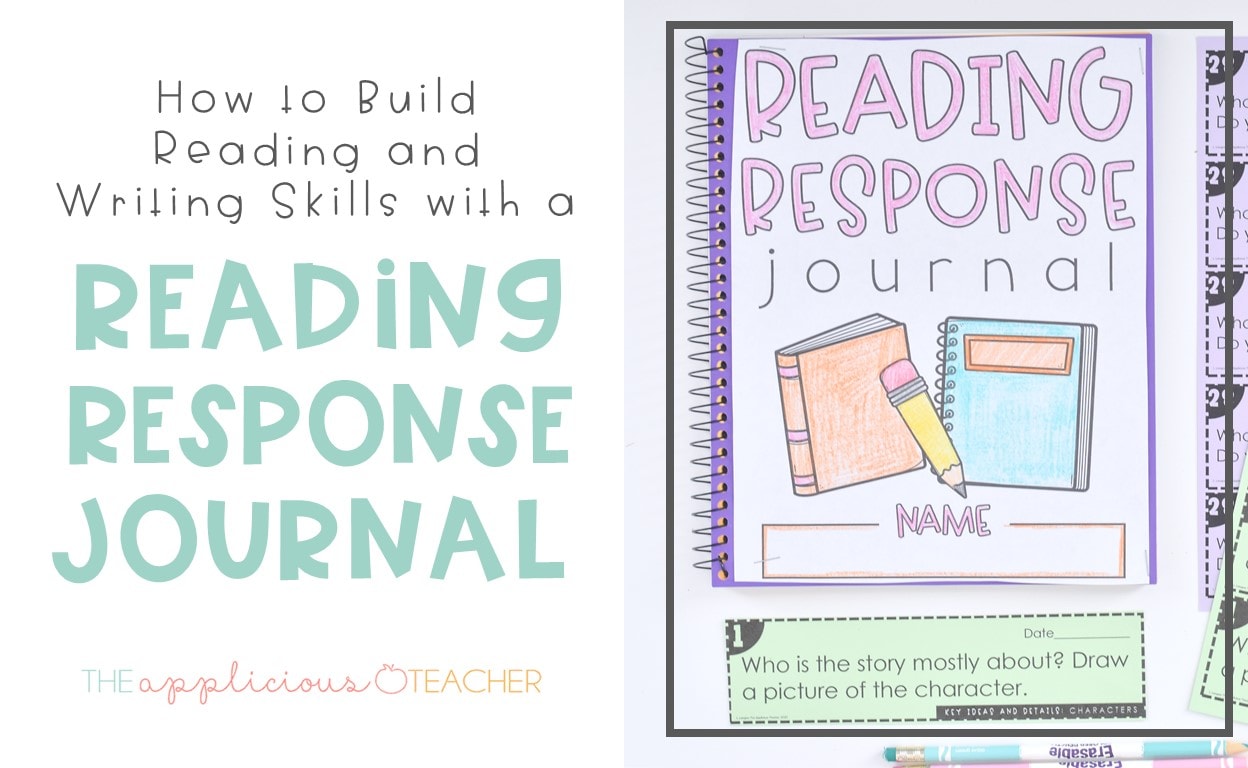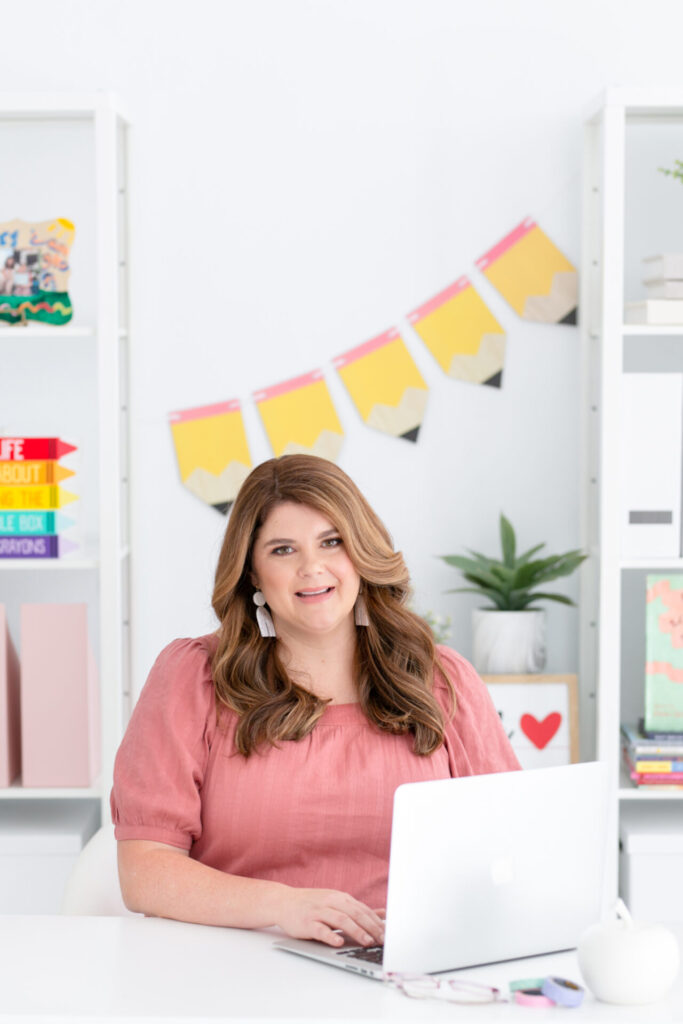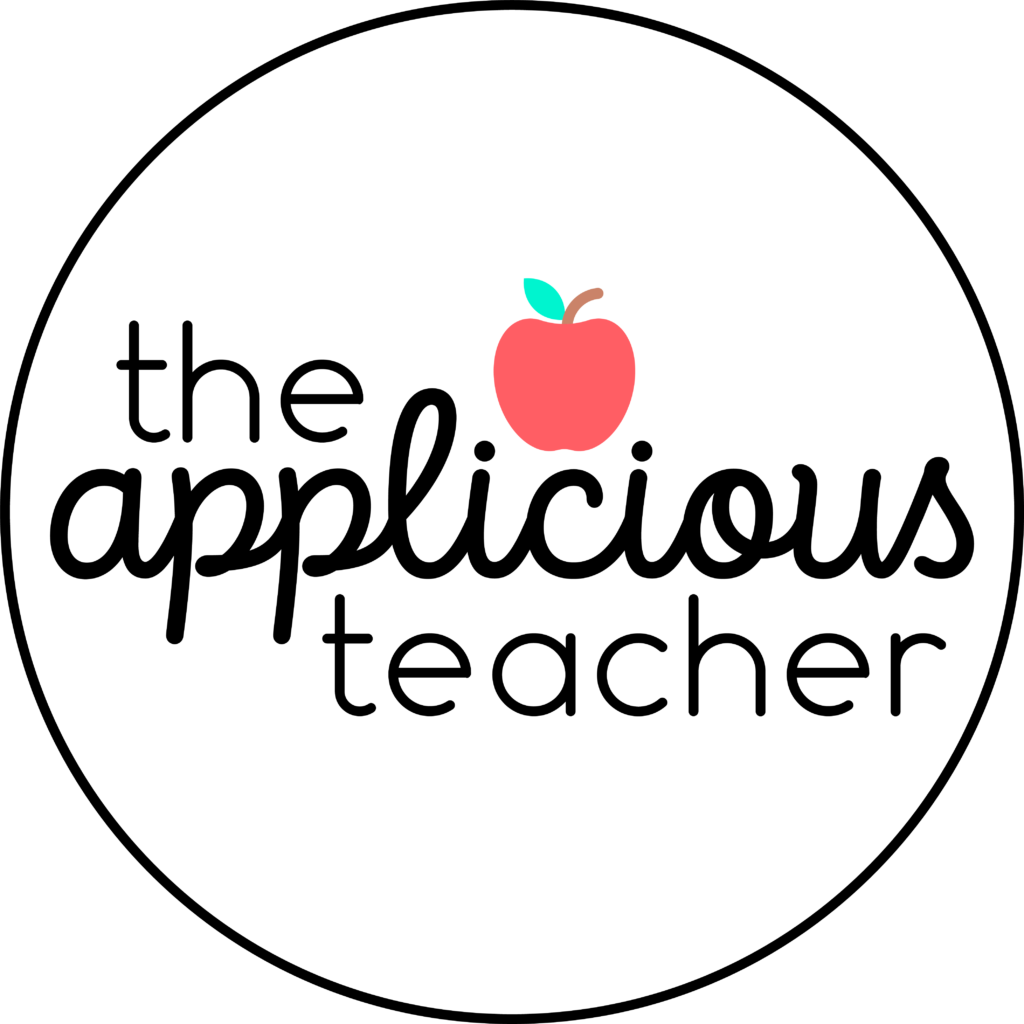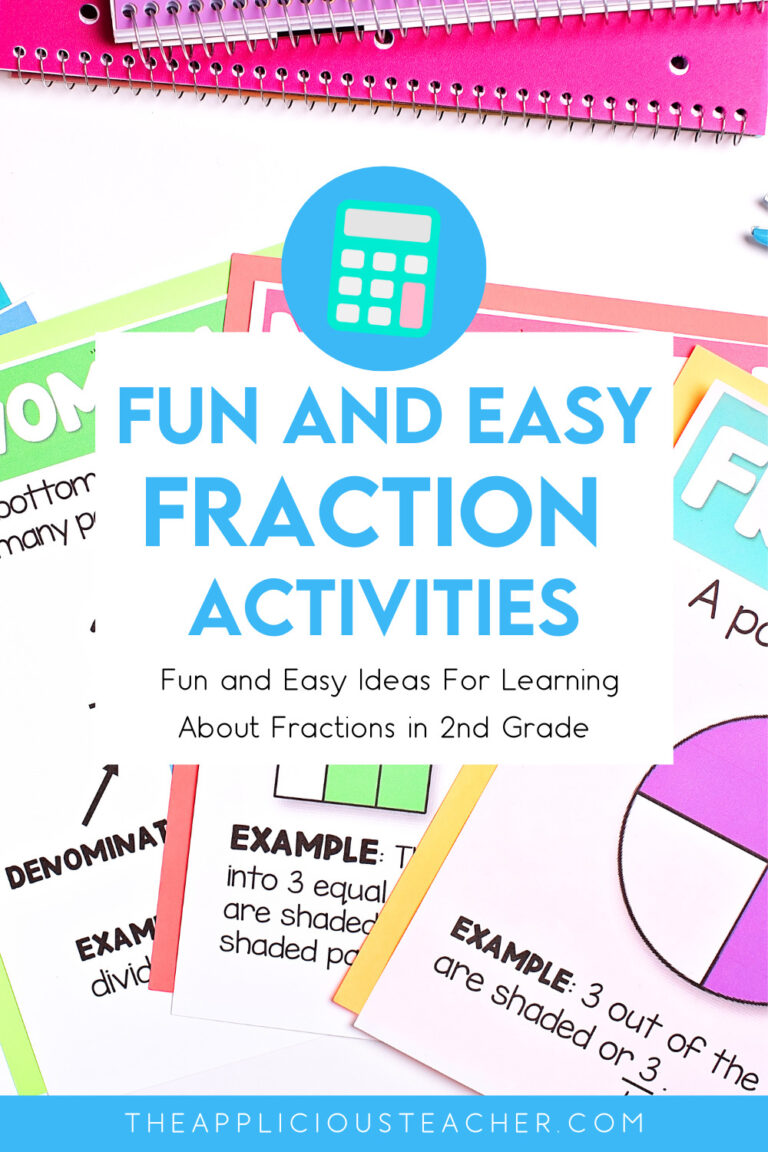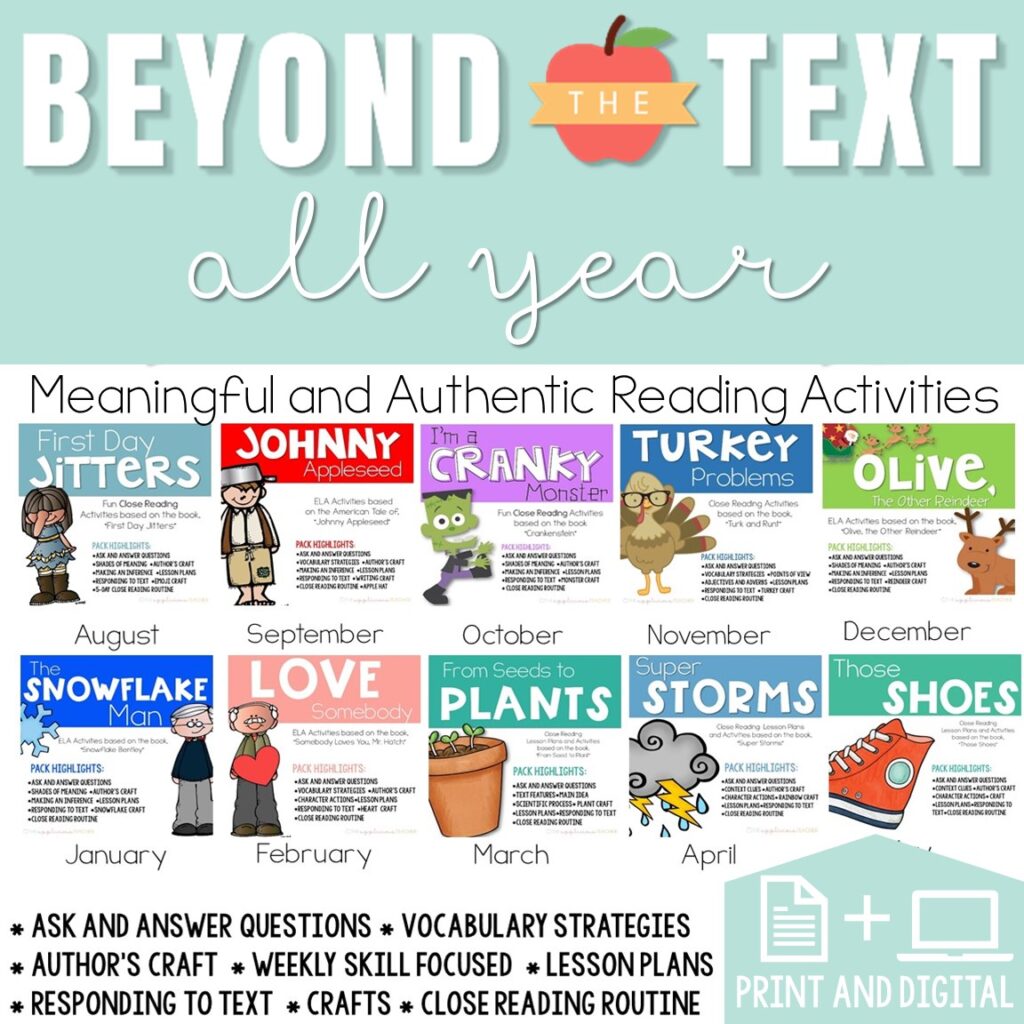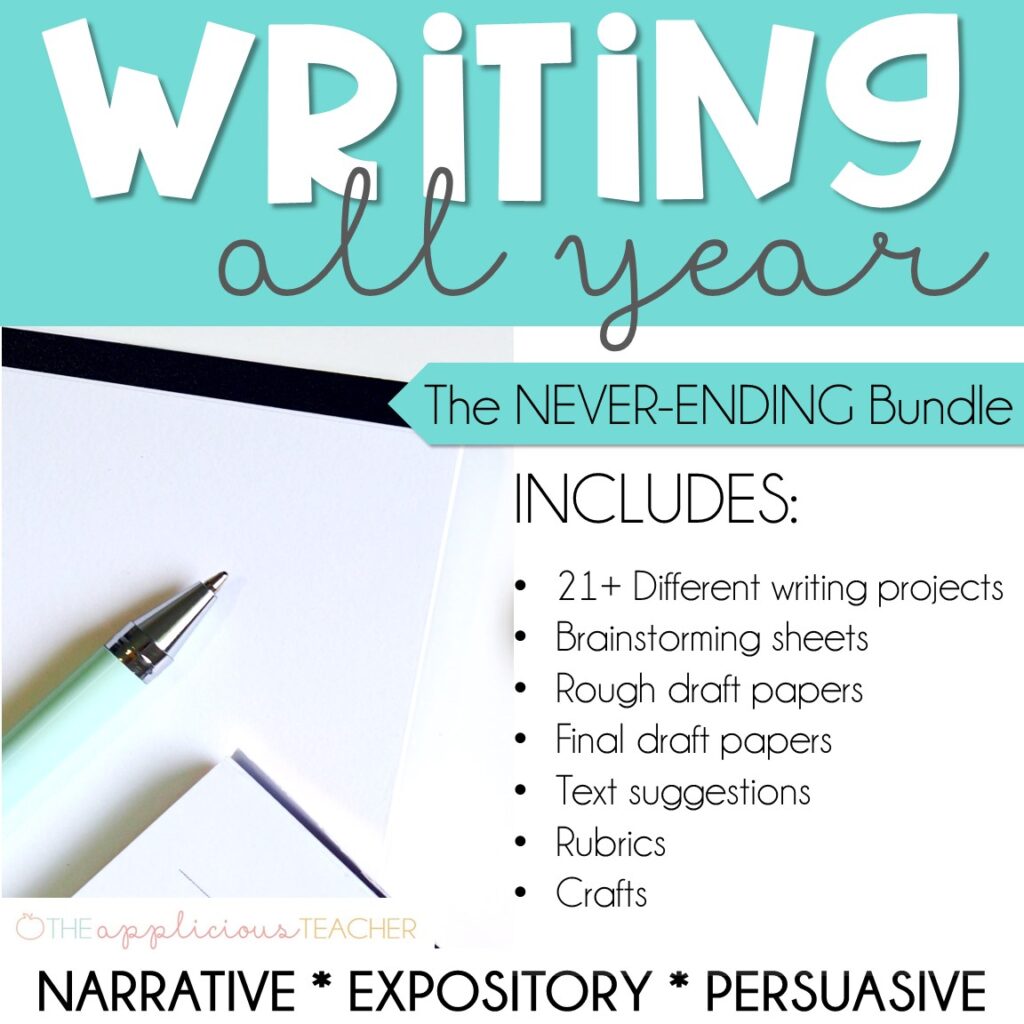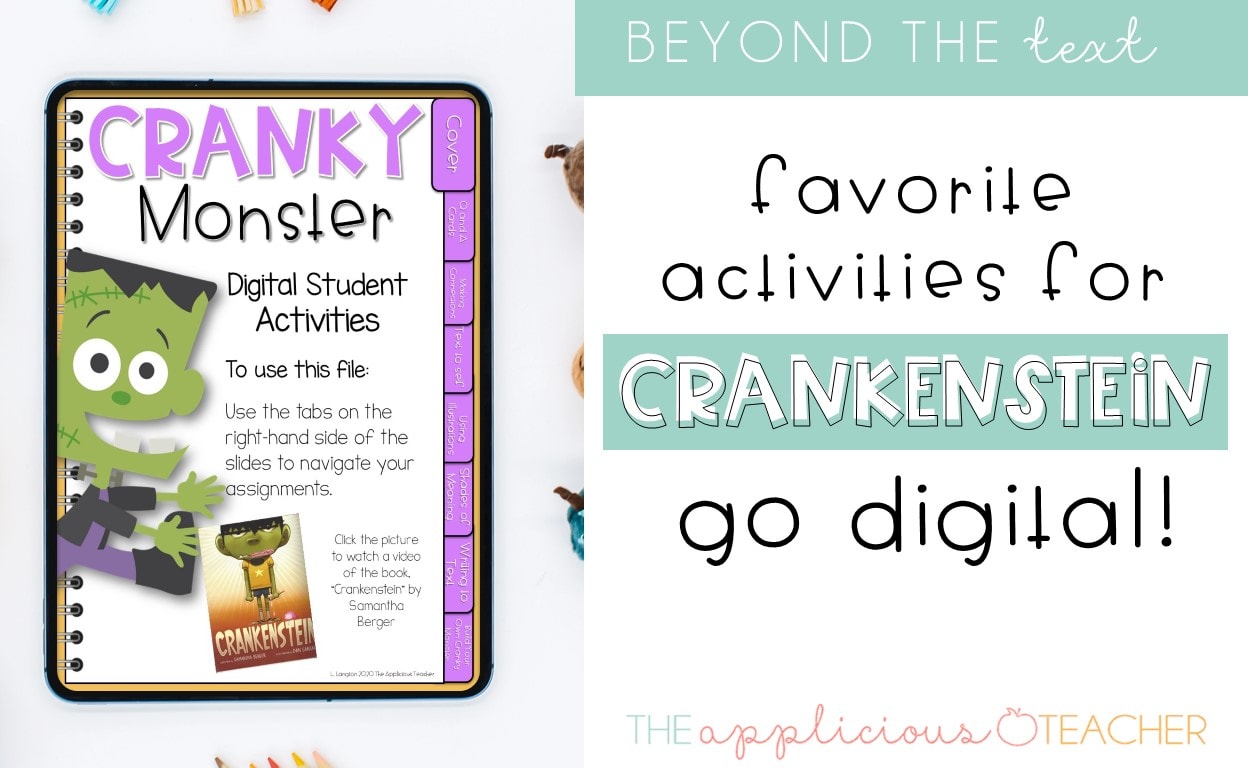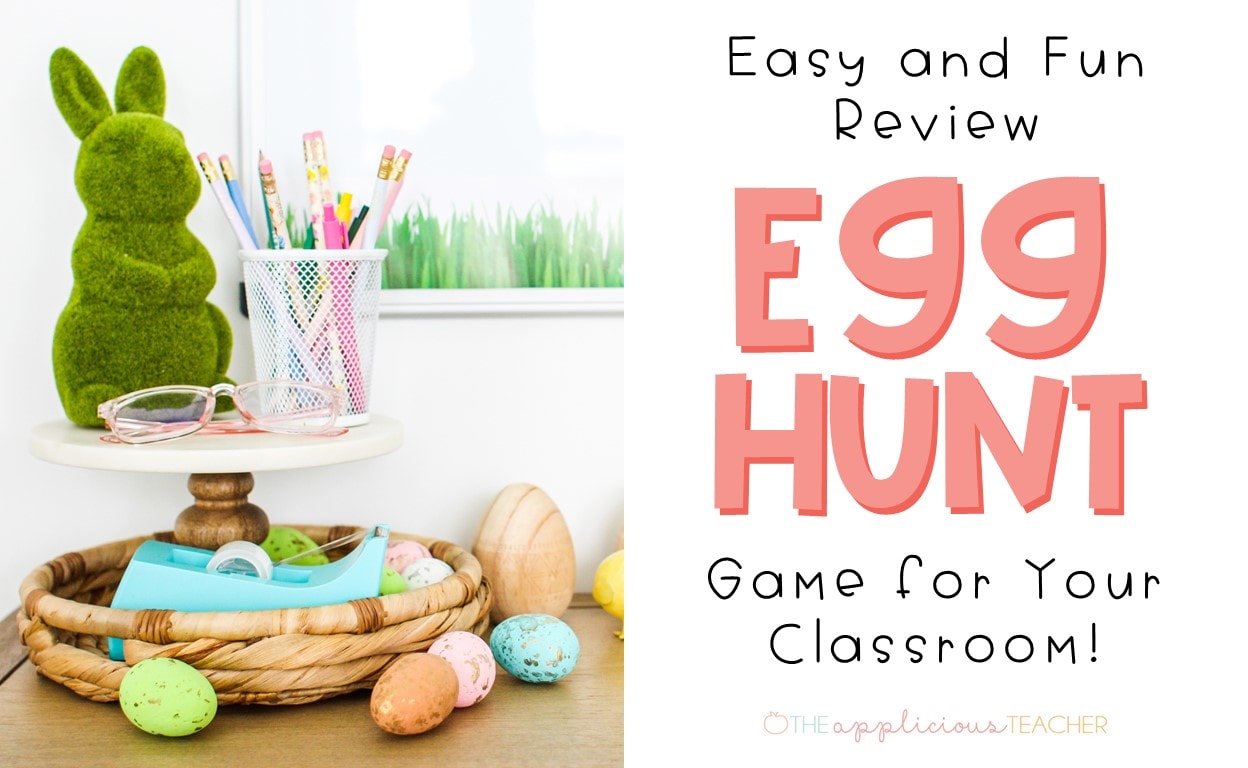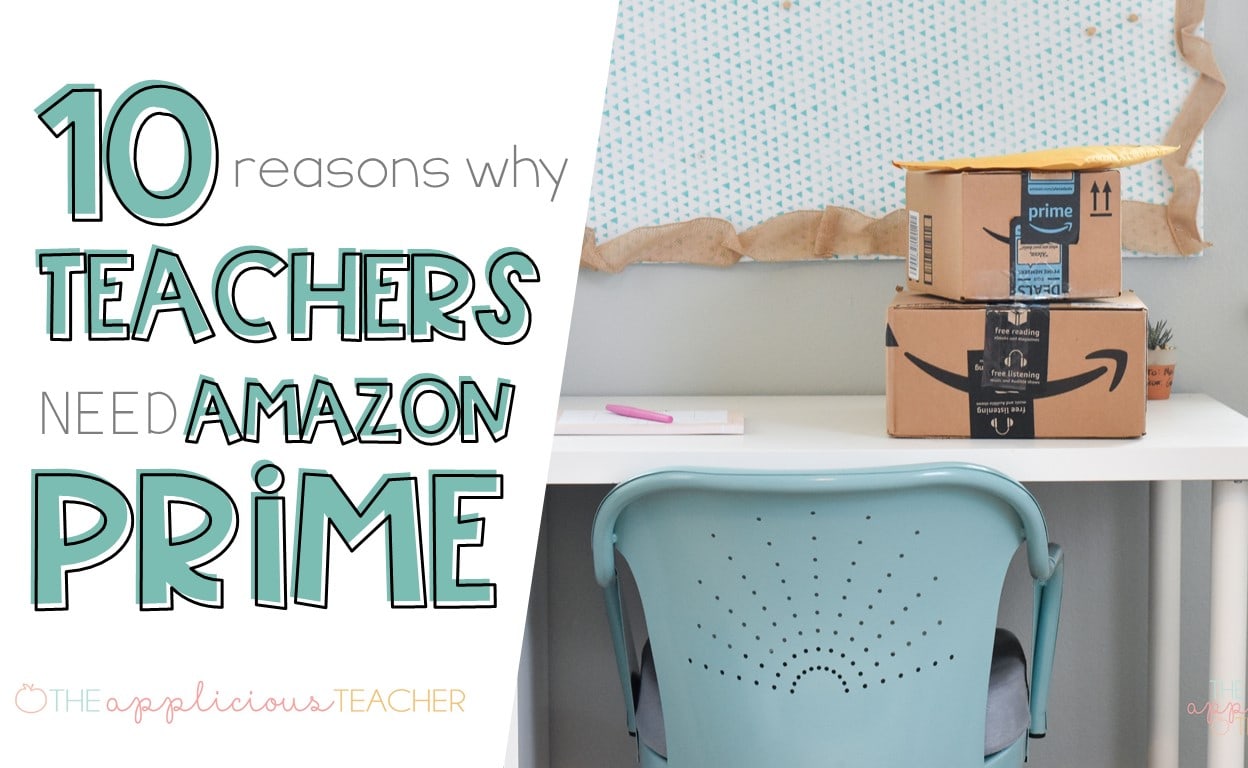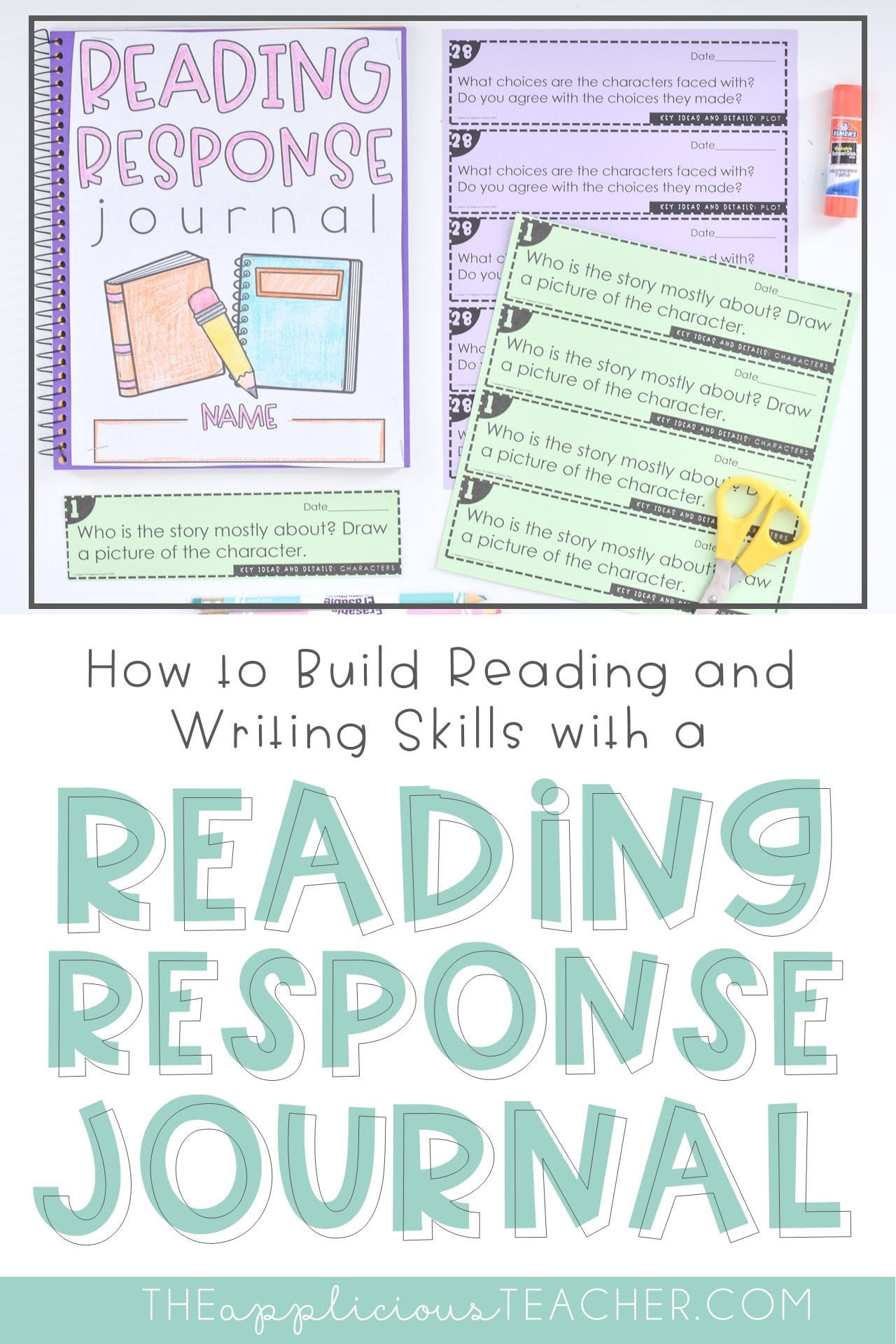
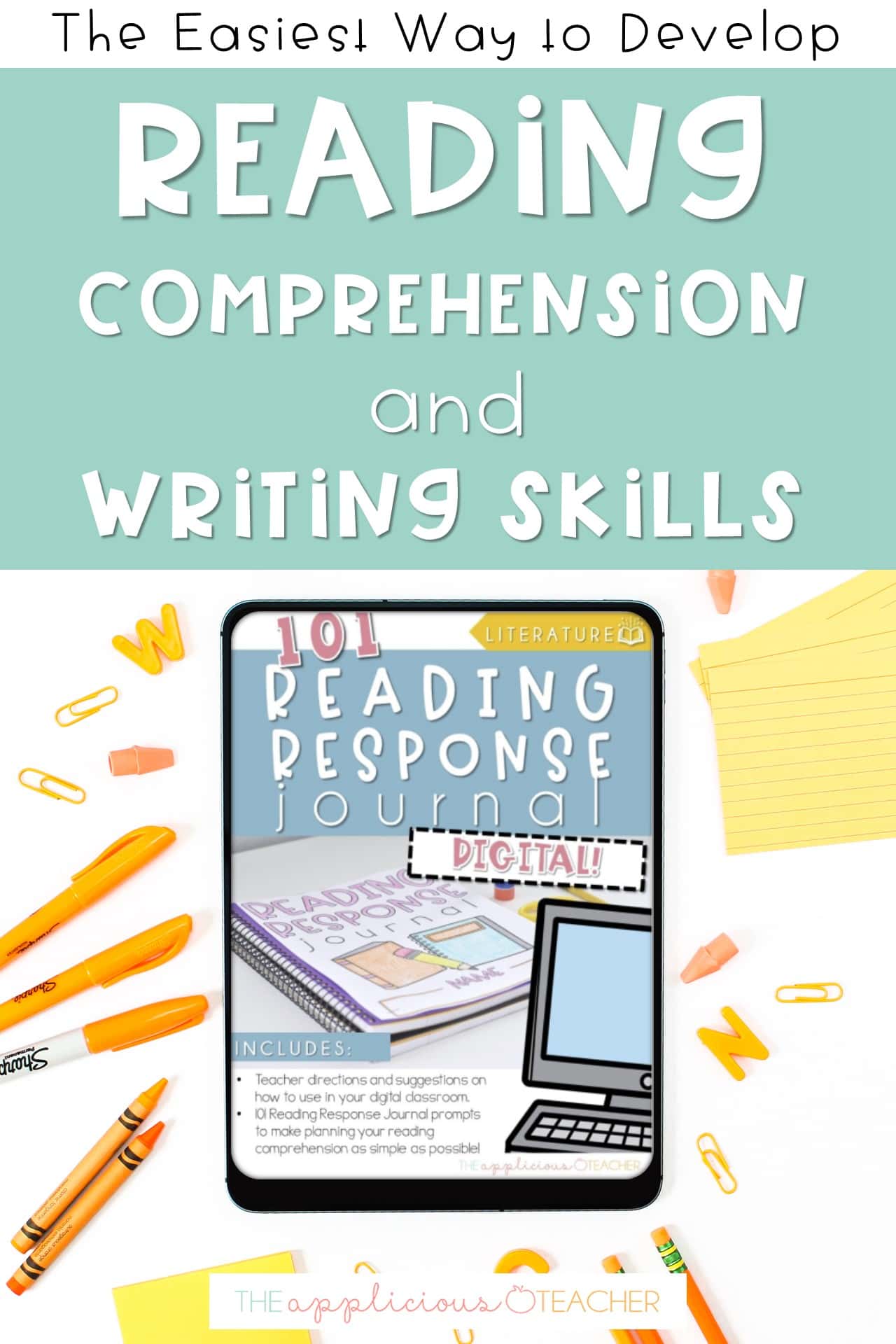

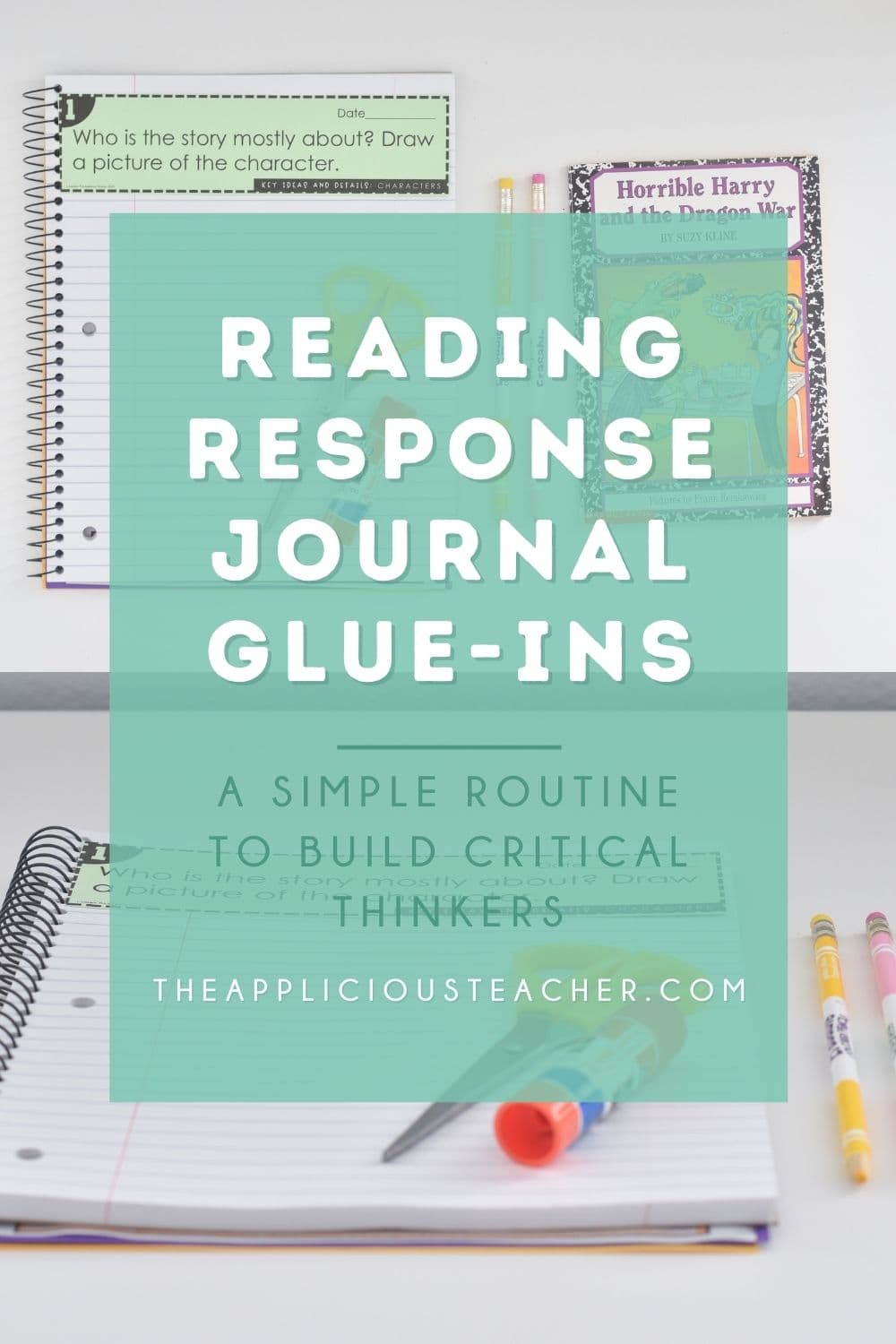
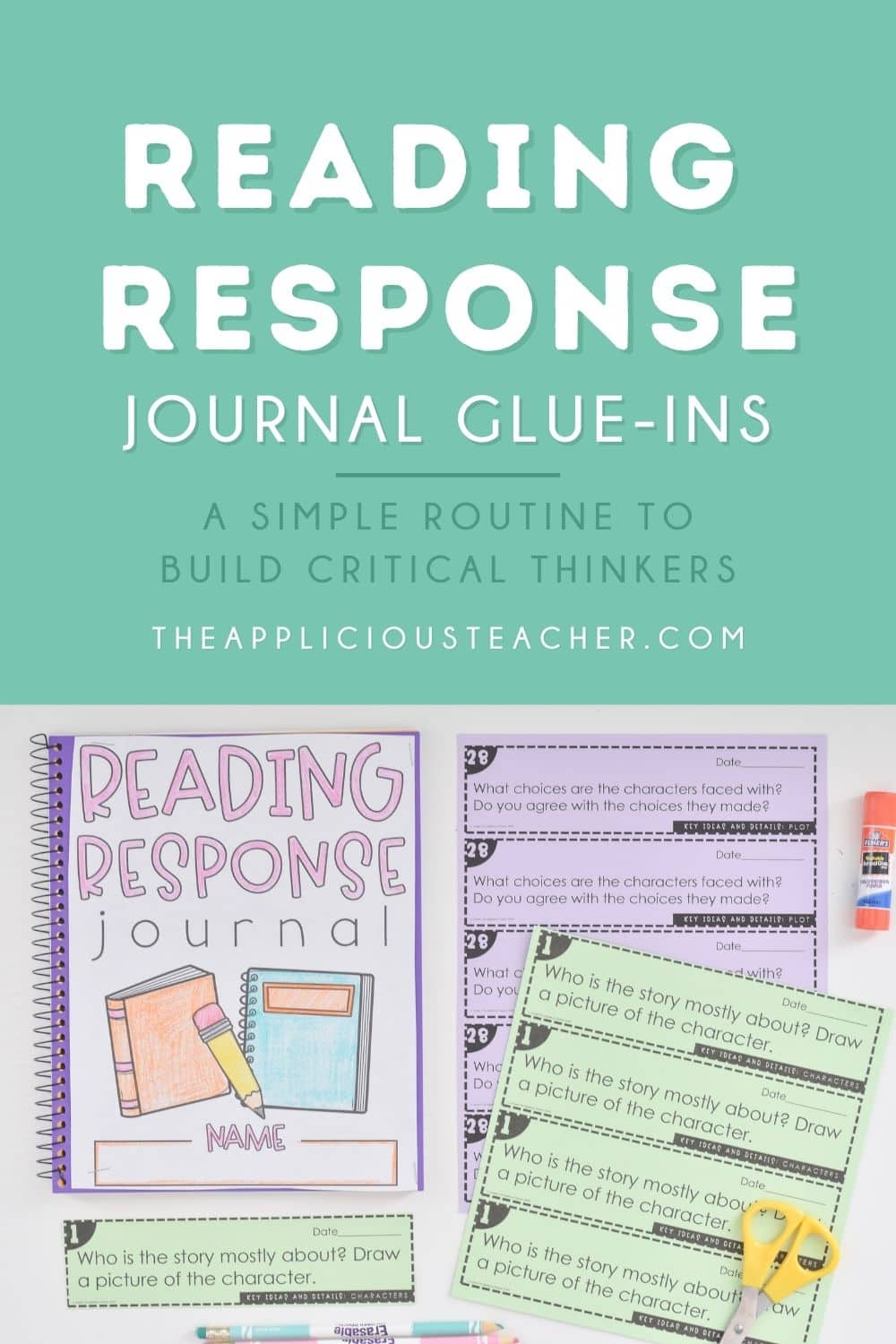
You can create meaningful and deep reading connections using a Reading Response Journal. Today I’m sharing how you can make this simple Reading/Writing routine even easier with Reading Response Journal Glue-Ins!
Here’s the thing about building deep reading comprehension and writing skills. It takes time… it takes practice… and it takes consistency. So if you’re a teacher struggling to “fit it all in,”… you may notice your students are struggling, too. Maybe they’re struggling with building deep, meaningful connections with a text. Or it’s like pulling teeth to even get your students to start writing, let alone craft quality text-dependent pieces.
But what if you could change all that? What if instead of your students riding the struggle bus when it comes to deep reading comprehension, they would be excited to dive even deeper? Or imagine that instead of begging your students to add at least one detail when it comes to writing, you have to actually set a timer because your students just want to write all.day.long. No, I’m not kidding about this one… those things really can happen, and today I’m sharing the super simple way you can do this even if you are low on time, not sure where to start, and are struggling with consistency because of well… teaching.
So what am I talking about? Reading Response Journals.
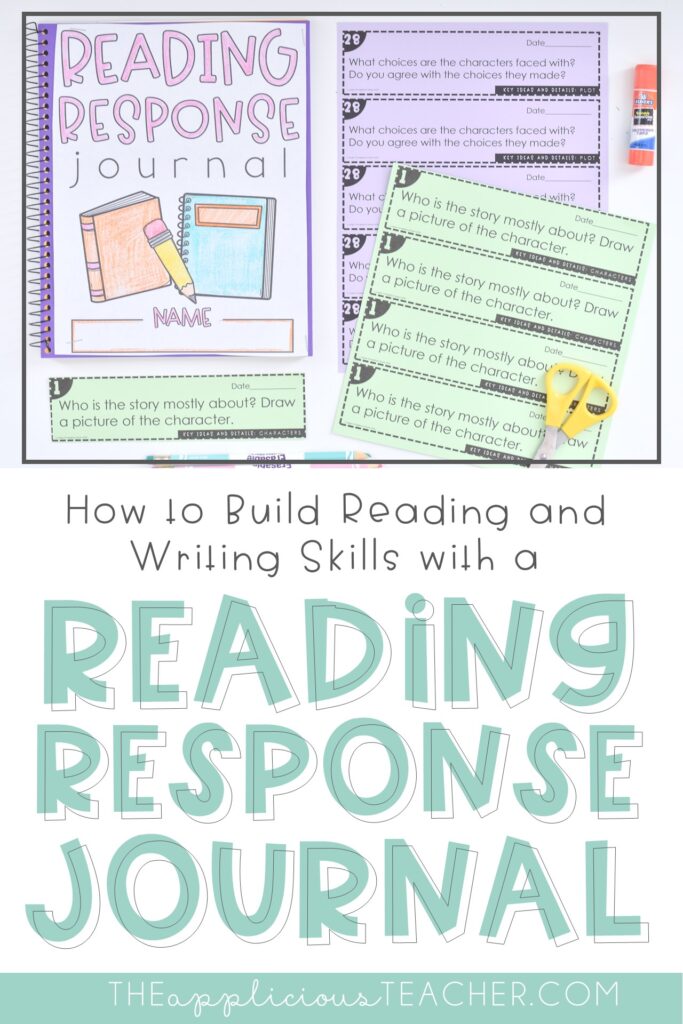
What is a Reading Response Journal?
I’ve spoken about the magic and simplicity of Reading Response Journals before. (You can check out that post here!) But, just in case you aren’t sure what they are, let’s review it one more time.
Simply put, a Reading Response Journal is a place for students to write, draw, and share their opinions and ideas or respond to a text we have read in class. It’s a simple notebook routine that I’ve used in grades k through 5th.
Why Use a Reading Response Journal?
So, here’s the thing about Reading Response Journals: they are a super simple way to close the reading and writing literacy connection.
Understanding the Reading and Writing Literacy Connection
Ok, let’s back up for a second. What do I mean by the reading and writing literacy connection?
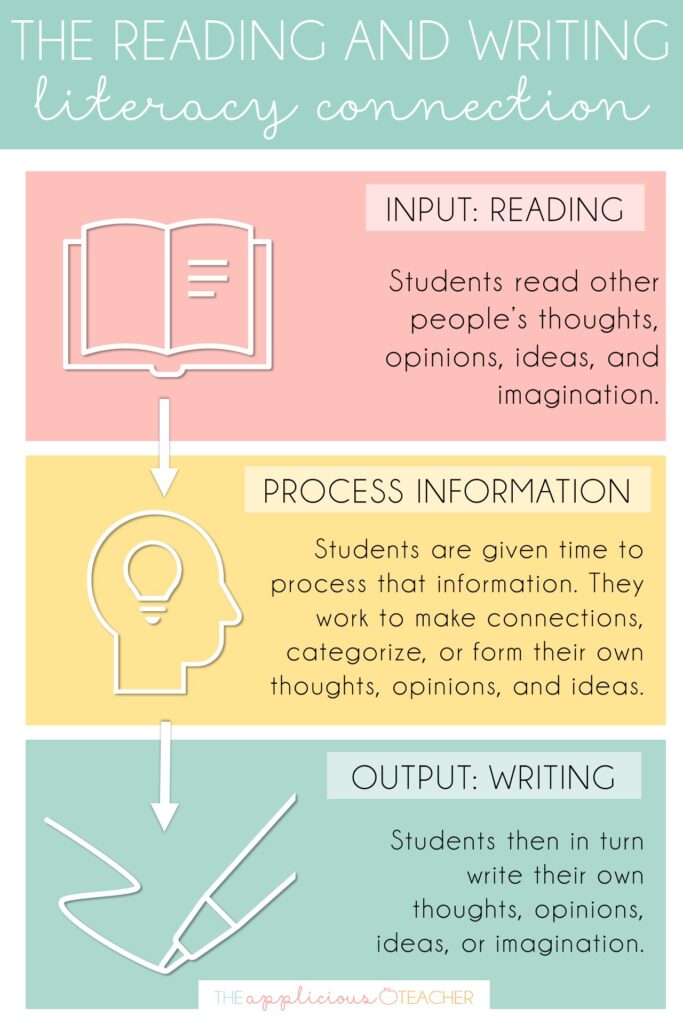
Reading is the input of literacy. Reading is the input of other people’s thoughts, ideas, opinions, and imagination. When students read, they are taking in those thoughts, ideas, opinions, and imagination.
Writing on the other hand is the output of literacy. Writing is the output of your students’ thoughts, ideas, opinions, and imagination. When students write, they are asked to take the input and produce an output.
If we want our students to develop deep, meaningful reading comprehension and powerful writing skills, we need to make sure we engage them in both the input and output of literacy. The deeper reading comprehension happens when students are given the opportunity to engage in the literacy connection of reading (input)-process-writing(output).
I know what you’re thinking… Leigh, this all sounds great… and complicated. I came here because I need something quick and easy and you promised me quick and easy.
Understanding Reading Response Journals
Reading Response Journals allow you to quickly and easily engage your students in the literacy connection.
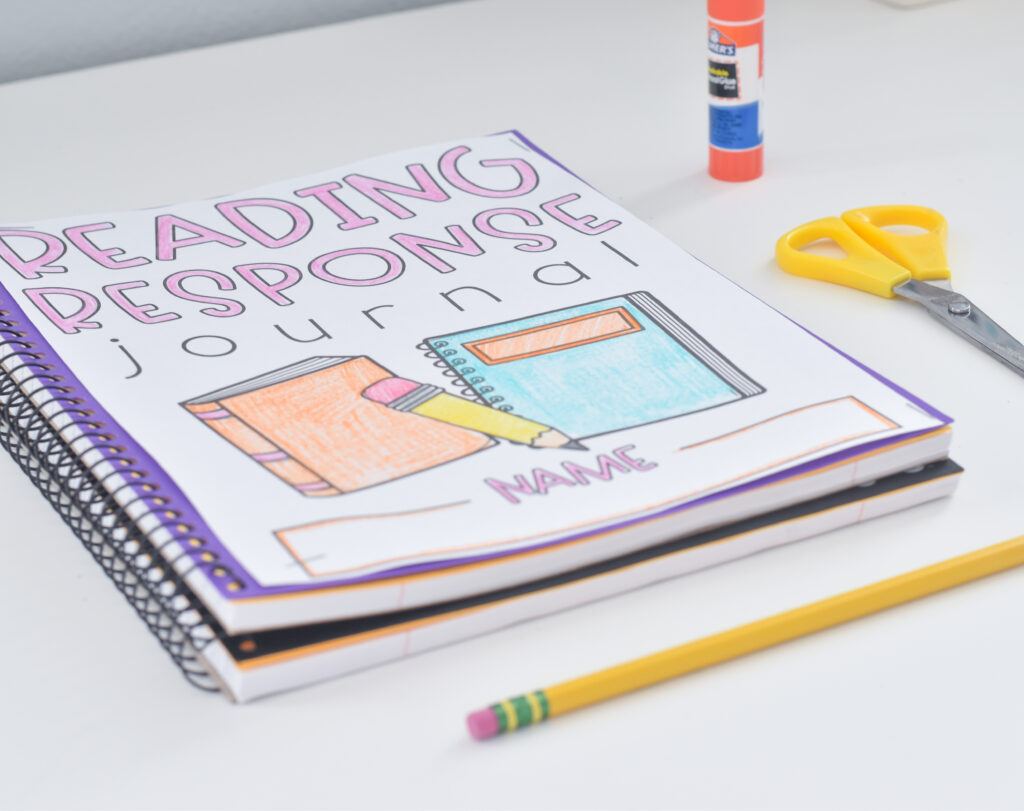
After students read (input), give them time to process what they’ve read (process). You can even help this process by guiding a class discussion on what your students have read. For younger students, talking is a huge part of the thinking process (think about all the talking your students do with just themselves!).
From there, give students time to then take what they’ve processed and put it on paper! (output!) This type of journal creates a safe space for your students to write. Now, they are filling the pages with their own thoughts, ideas, opinions, and imagination based on what they’ve read. And they’ll be happy to do it because they’re writing with their favorite subject in mind: themselves. Reading and writing are just extended forms of communication. All students want to communicate, and Reading Response Journals make it super simple to tap into this natural want.
Makes Reading ComprehensionQuick and Easy!
So what makes this practice so quick?
Well, Reading Response Journals are stored in a student’s desk and can be pulled out at a moment’s notice. They are also very low-key. No table of contents, no special tabs, just a notebook ready to be filled!
I also promised that they are easy… and they are. Reading Response Journals don’t need to be maintained by you, the teacher. There’s no need to formally grade your students’ Reading Response Journals (they aren’t a test!) and if you allow your students to write in them at least once or twice a week, writing about what they have read becomes a habit.
But, What Should Students be Writing About in Their Journals?
Like I said earlier, a Reading Response Journal is a place where students can write about what they’ve read, but in order to make sure your actively engaging your students in a way that builds deep comprehension, you have to ask the right questions for students to respond too. And that part can be tricky… until now.
101 Reading Response Journal Glue-ins take all the guesswork out of what students should be writing about in their journals.
Make it Easy with 101 Reading Response Journal Glue-ins
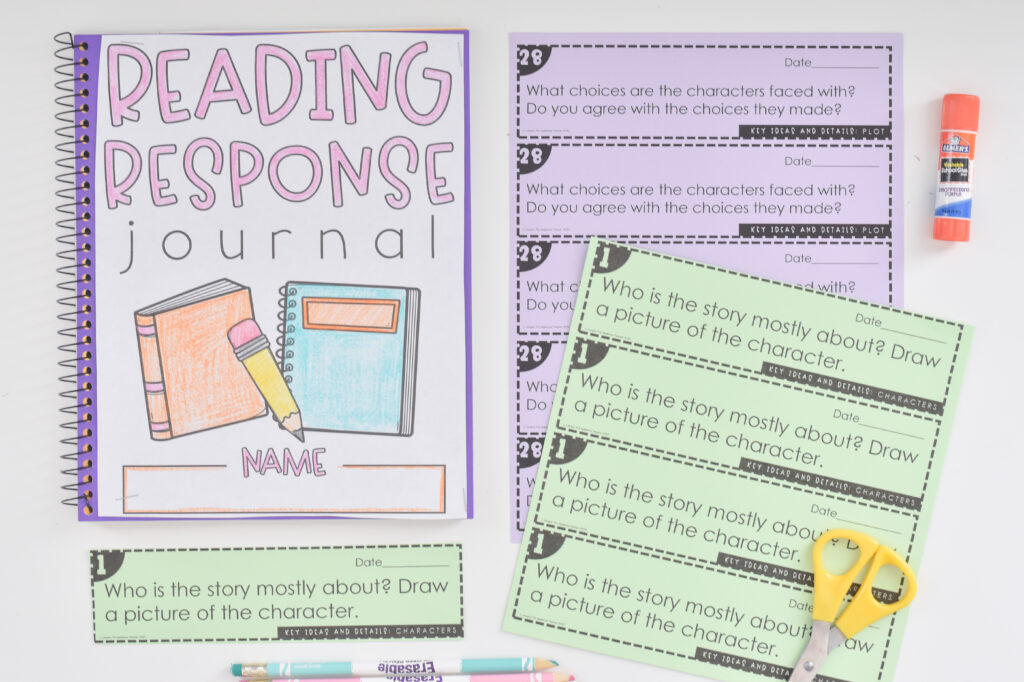
101 Reading Response Journal Glue-ins include 101 question prompts that are prepped and ready for you. All you have to do is print and pass them out. Each question is standard’s aligned, making it super simple for you to scroll through and find questions that go perfectly with what you’re teaching that week!
Now, instead of spending time searching, thinking, and creating standards-aligned questions, you can be doing other things like taking a sip of your *almost* still warm coffee or helping that one student find a pencil (after you know you just gave them one…).
How to Implement 101 Reading Response Journals in Your Classroom
I know what you’re thinking… Leigh, I love it, now how do I do it?
Implementing 101 Reading Response Journal Glue-ins in your classroom is super simple!
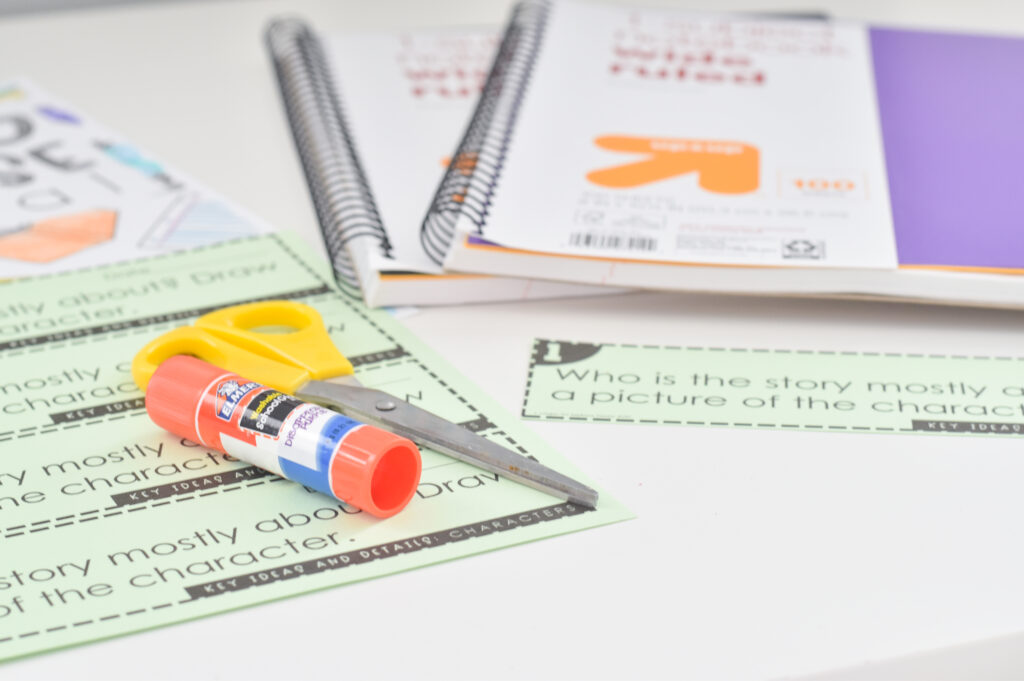
First, you need to set up the journals. For the journal, I like to use a one-subject spiral notebook. I’ve found that these are easier to write in and are cheaper than composition notebooks.
From there, add a cover! (Don’t worry! This product includes two different cover styles for to chose from!) This makes the journal special and much easier for students to find when they’re digging through their desks.
Now you’re students are ready to start writing and responding.
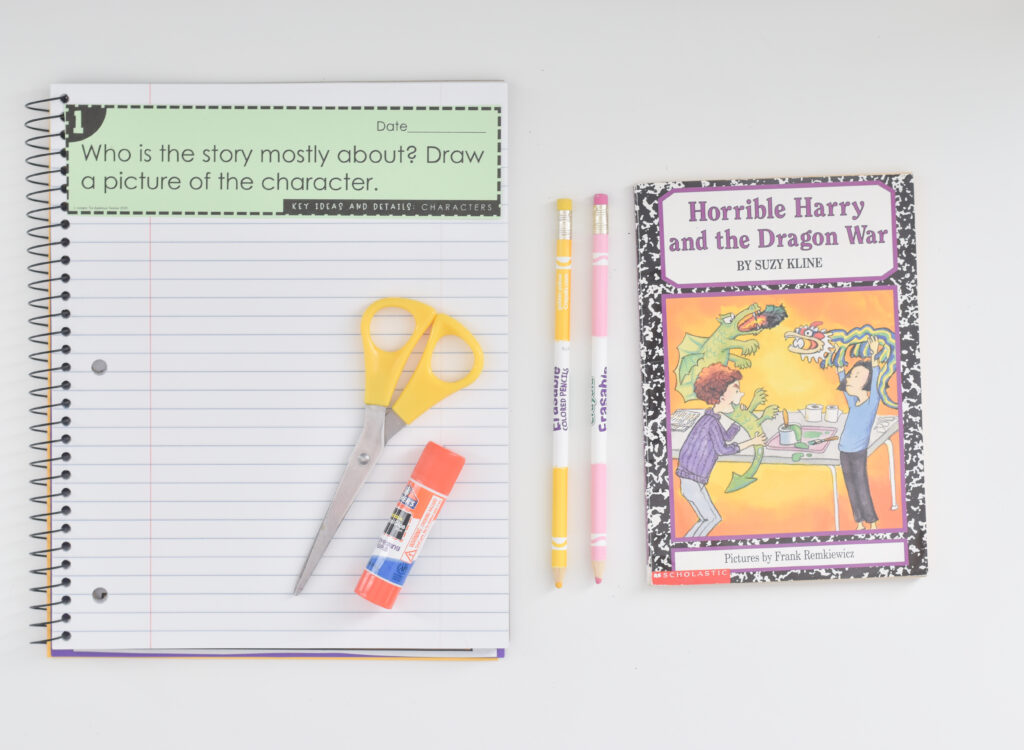
101 Reading Response Journal Glue-ins makes it simple to ask your students deep thinking questions.
Just navigate through the file to the standards you’re working on. Then, select a question from that section. Print out enough questions for each student.
After your students have read, pass out the question and have them glue it into their Reading Response Journal. I like for students to add a date! From there, have them respond to the question right there in the journal.
When you’re ready, give students time to share their responses and discuss. You can walk around and check student responses with a marker, but in general, this exercise is more for a spot check of understanding instead of a grade.
If you’ve been wanting to up the reading comprehension game for a while, but are unsure where to start, these Reading Response Journal Glue-ins take out all the guesswork!
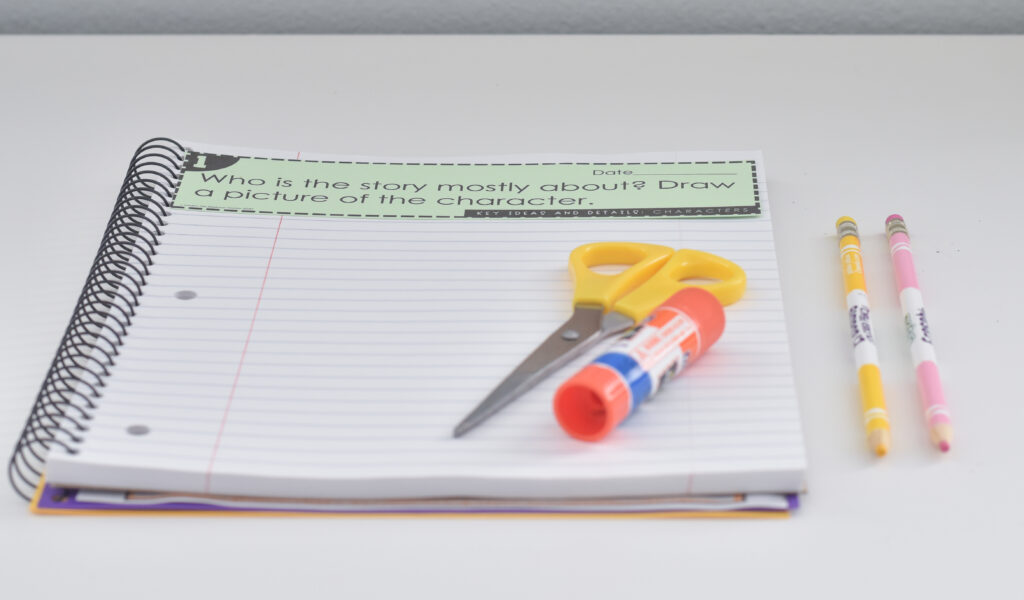
Each prompt included in 101 Reading Response Journals is standard-aligned, so there’s n question on whether they’ll work with your curriculum.
The questions included fall in Webb’s Depth of Knowledge 2-3. They are designed to get your students thinking, wondering, and pondering.
Now, instead of spending week after week stressing over questions for your students to answer in their Reading Response Journals, you can just print, cut, and paste.
Grab 101 Reading Response Journal Glue-Ins!
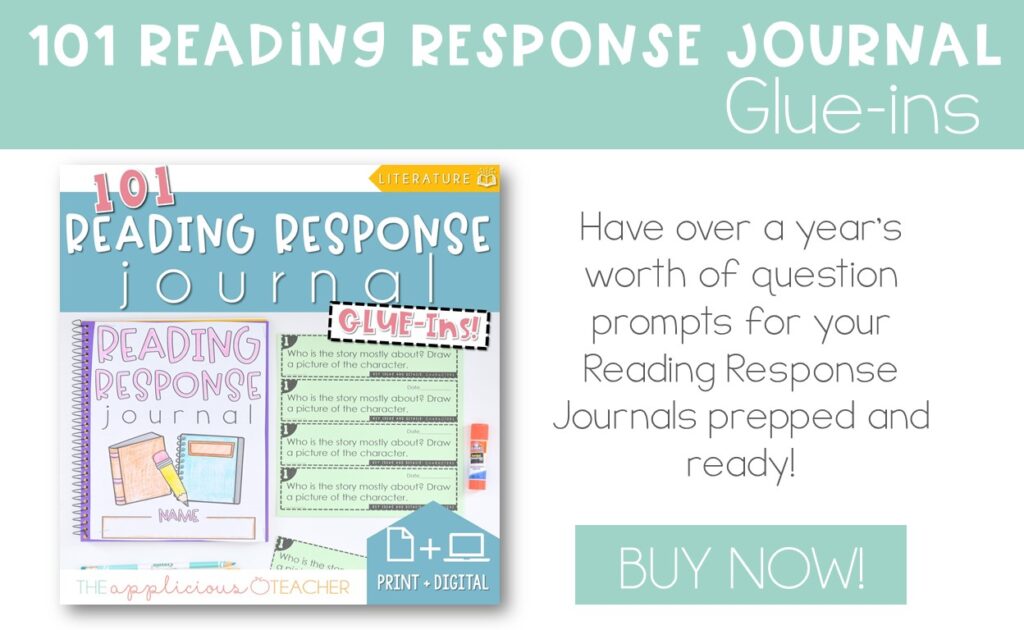
Grab these glue-ins for yourself! You can snag them here in my TeachersPayTeachers store. Oh! And I know many teachers are teaching via distance learning, so of course, this product also includes digital versions of the prompts as well as teacher-friendly directions on how to easily push them out to your class!
Love this post? Check out these other great ideas!
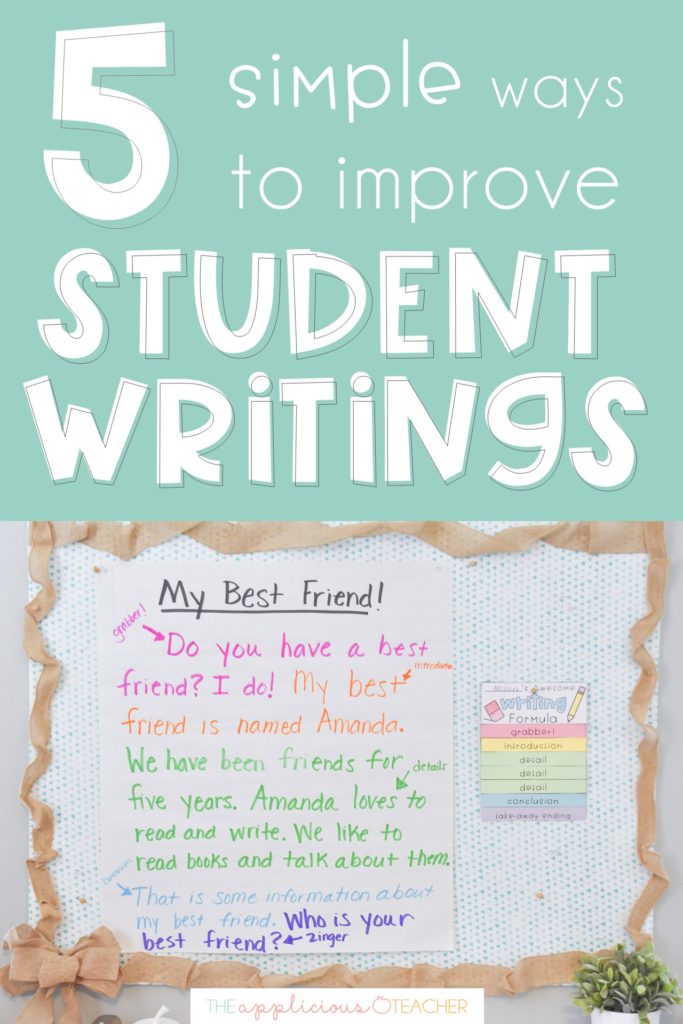
- 5 Simple Ways to Improve Student Writings
- Teacher Reading Comprehension in a Digital Classroom
- Interactive Anchor Charts
- Ways to Support Spelling During Writing

